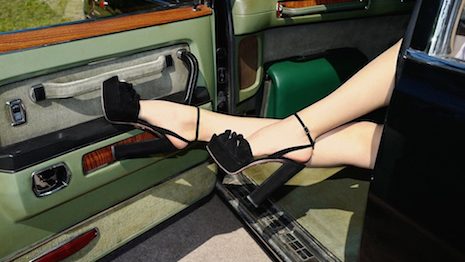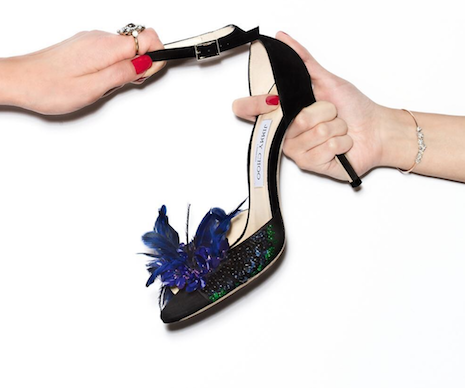 Aquazzura aims for wide spread locations. Image credit: Aquazzura.
Aquazzura aims for wide spread locations. Image credit: Aquazzura.
Consumers are spending more on luxury apparel, footwear and accessories online, helping to drive a 50 percent increase in dollar sales in recent years. According to data from NPD Group, while consumers have not upped the frequency of their apparel and accessories purchases, the average spend per shopper has grown. Meanwhile, shoppers are buying footwear more often than before, and the category sees the highest average spend.
“The luxury market is evolving, new brands are getting attention, and online retailer platforms are elevating the competitive landscape,” said Marshal Cohen, chief industry advisor at The NPD Group, in a statement. “The younger, multi-ethnic demographic that is more attracted to purchasing designer products online – even more than the average online accessories, footwear, or apparel buyer – is a major contributor to this evolution.”
Purchase trends Accessories also saw a 5 percent growth per buyer, reaching $782. Shoppers now spend an average $716 on luxury apparel, up 17 percent. Footwear is now bought slightly more frequently, with an average 1.6 purchases a year. Sales were also up 4 percent to $794. Shoes account for about half of total luxury fashion dollars. “It’s not just about the statement bag anymore, now, thanks to expanded accessibility, the statement shoe is also an area of focus and investment for consumers,” Mr. Cohen said. “If we pay attention to what consumers are saying, these new market dynamics spell a great deal of opportunity across the entire luxury fashion market.” Shoes are a key category for online sales. Image credit: Jimmy Choo
While baby boomers and Gen Z consumers are pulling back on their online fashion spending, millennials are making more apparel purchases via ecommerce.
According to a report from Criteo, millennials spent 4 percent more on clothing and accessories online last year, showing a greater preference for fashion ecommerce than their younger Gen Z counterparts. As these generations become a greater part of the luxury business, luxury brands need to be ready to meet their disparate multichannel shopping habits (see story).
Shoes are a key category for online sales. Image credit: Jimmy Choo
While baby boomers and Gen Z consumers are pulling back on their online fashion spending, millennials are making more apparel purchases via ecommerce.
According to a report from Criteo, millennials spent 4 percent more on clothing and accessories online last year, showing a greater preference for fashion ecommerce than their younger Gen Z counterparts. As these generations become a greater part of the luxury business, luxury brands need to be ready to meet their disparate multichannel shopping habits (see story). 